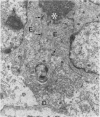Abstract
A model has been developed for studying the capability of cells from primary murine mammary tumours to establish colonies in distant organs. The model involves the i.v. inoculation of disaggregated tumour cells into autologous and syngeneic recipients. The results show that the metastatic colonization potential of cells from a given tumour is consistent within the animals of an inoculated batch. Also, the findings are uniform in the autologous host and the syngeneic recipients. Tumours vary in their colonization potential and can be classified in 2 main groups designated high and low. These findings indicate that: (i) cells from 37% of mammary tumours can heavily colonize the lungs when inoculated i.v., even though the incidence of metastatic spread of these tumours in the undisturbed animal is almost zero. Thus, the relative infrequency of spontaneous metastasis from murine mammary tumours is not due to inability of the tumour cells to survive and colonize once free in the blood stream; and (ii) the colonization potential of the tumours is an intrinsic property of the tumour cells rather than of the host, whose prior acquaintance with the cells does not seem to confer resistance to colonization. The model presents opportunities for identification of possible differences between tumours of high and low colonization potential, and is being used to study cellular properties which favour colonization of distant organs by comparison of observations in vitro with the behaviour of cells from the same tumour in vivo.
Full text
PDF

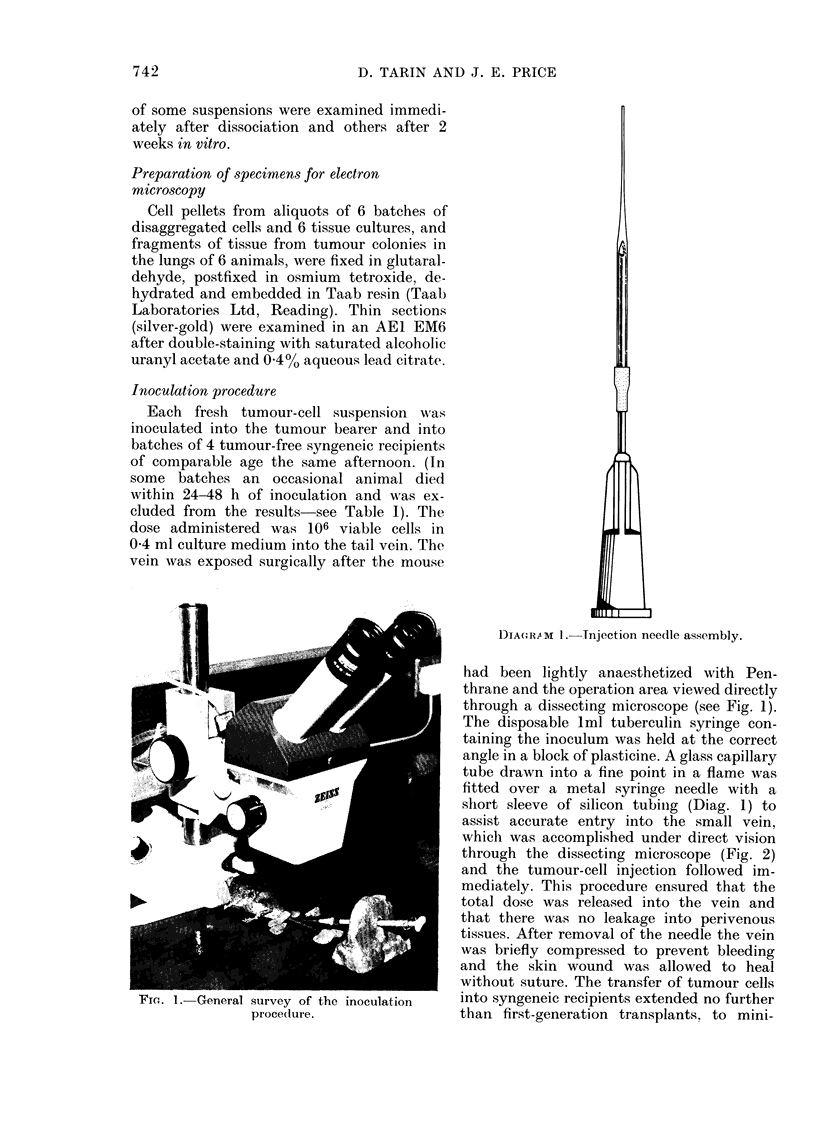


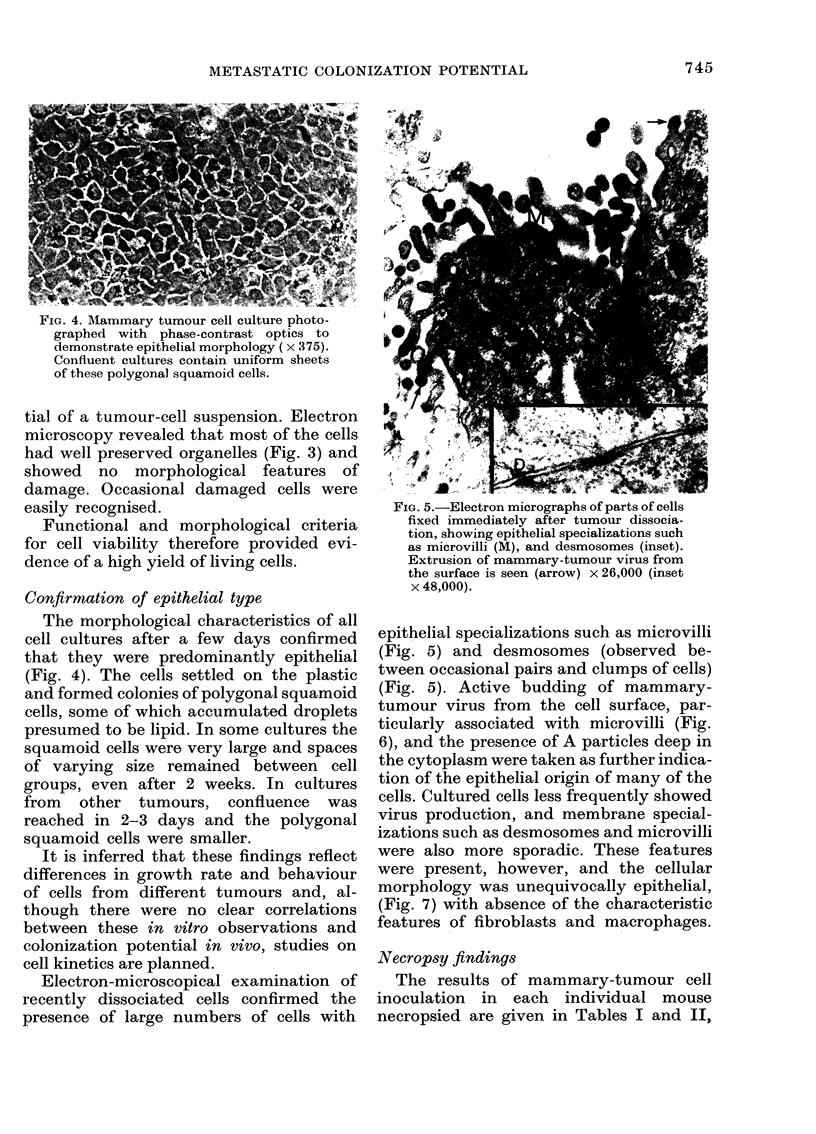

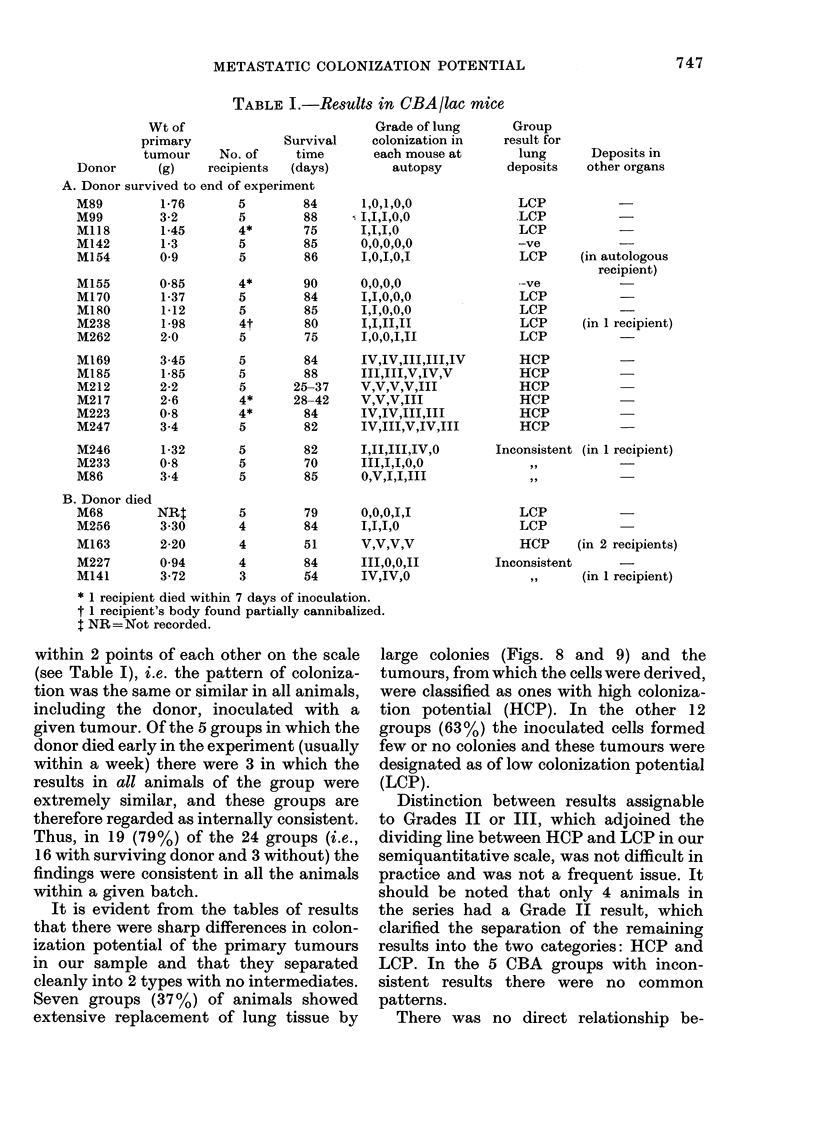
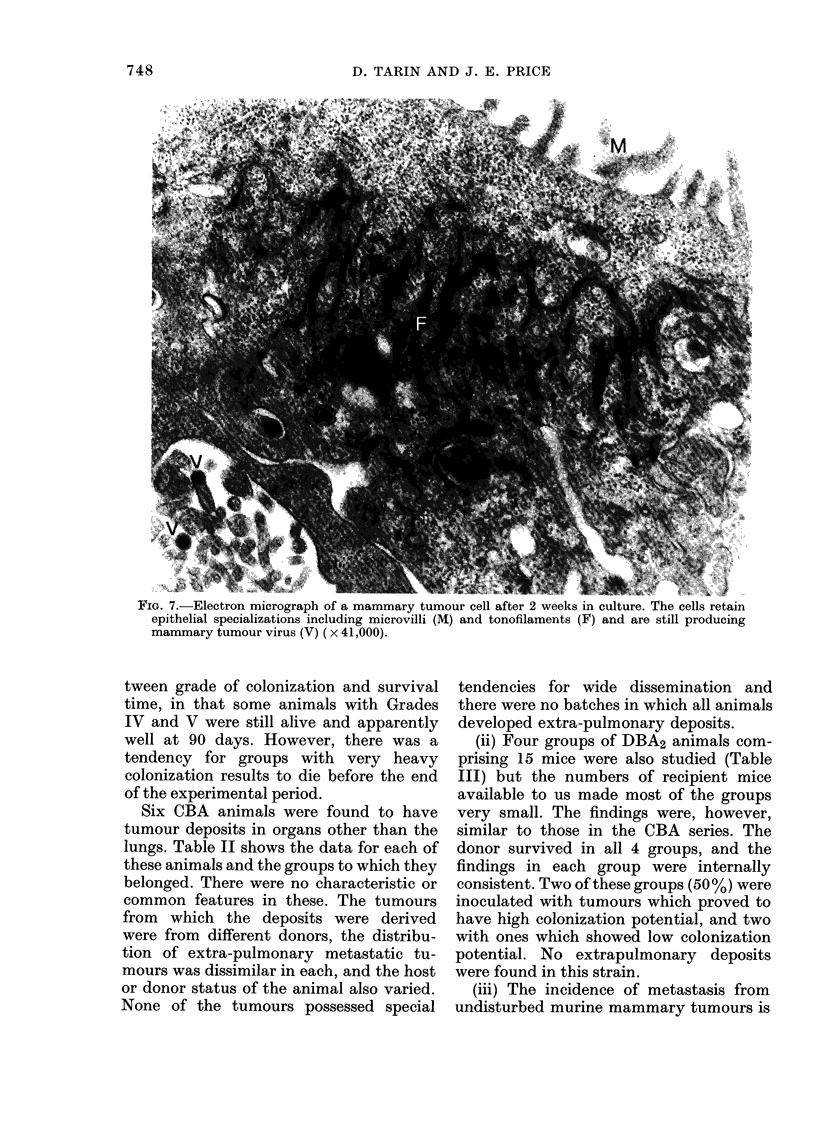
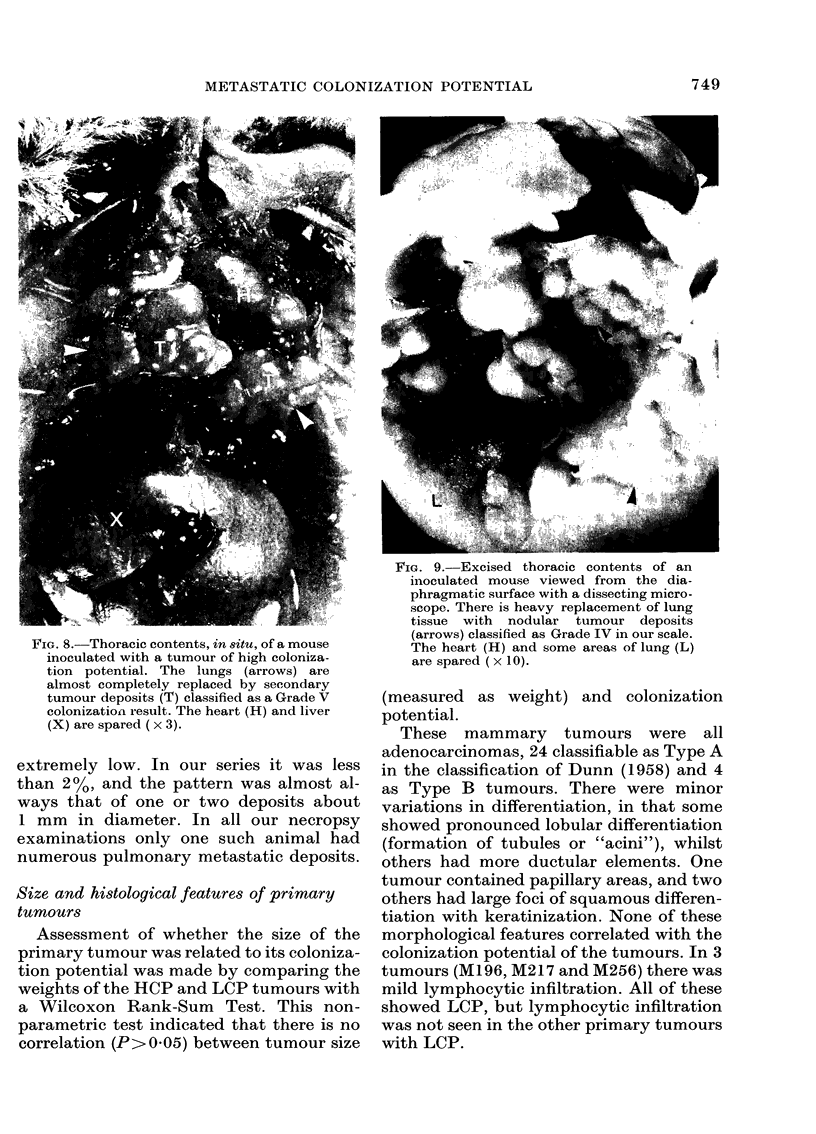
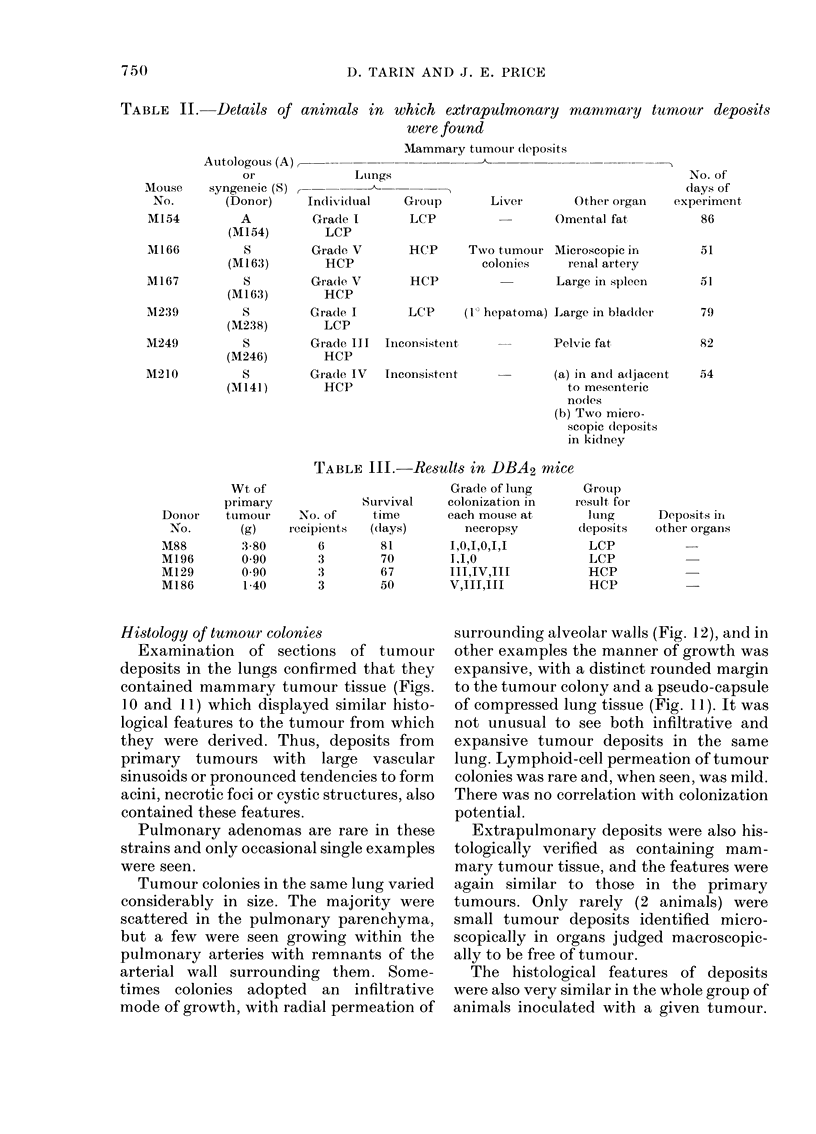
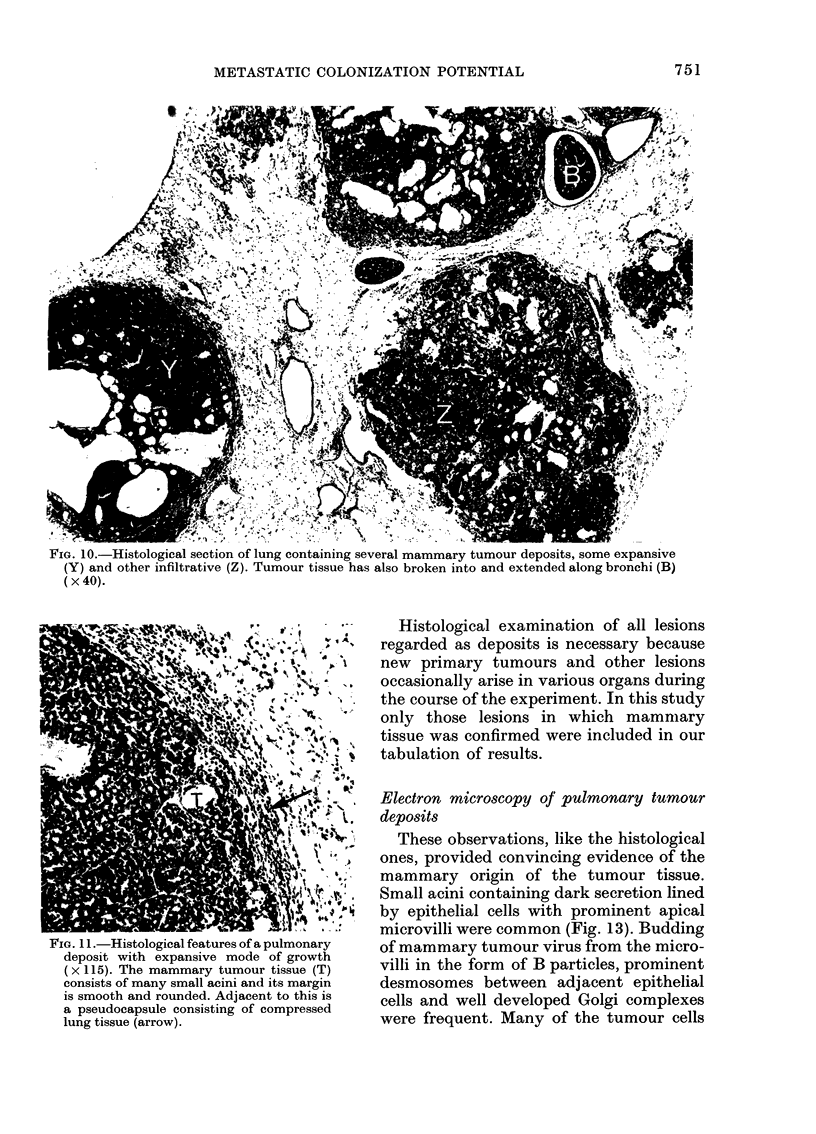



Images in this article
Selected References
These references are in PubMed. This may not be the complete list of references from this article.
- Fidler I. J. Tumor heterogeneity and the biology of cancer invasion and metastasis. Cancer Res. 1978 Sep;38(9):2651–2660. [PubMed] [Google Scholar]
- Hagmar B., Norrby K. Influence of cultivation, trypsinization and aggregation on the transplantability of melanoma B16 cells. Int J Cancer. 1973 May;11(3):663–675. doi: 10.1002/ijc.2910110317. [DOI] [PubMed] [Google Scholar]
- Kripke M. L., Gruys E., Fidler I. J. Metastatic heterogeneity of cells from an ultraviolet light-induced murine fibrosarcoma of recent origin. Cancer Res. 1978 Sep;38(9):2962–2967. [PubMed] [Google Scholar]
- Van den Brenk H. A., Sharpington C., Orton C. Macrocolony assays in the rat of allogeneic Y-P388 and W-256 tumour cells injected intravenously: dependence of colony forming efficiency on age of host and immunity. Br J Cancer. 1973 Feb;27(2):134–152. doi: 10.1038/bjc.1973.18. [DOI] [PMC free article] [PubMed] [Google Scholar]
- Weiss L., Glaves D., Waite D. A. The influence of host immunity on the arrest of circulating cancer cells, and its modification by neuraminidase. Int J Cancer. 1974 Jun 15;13(6):850–862. doi: 10.1002/ijc.2910130612. [DOI] [PubMed] [Google Scholar]















